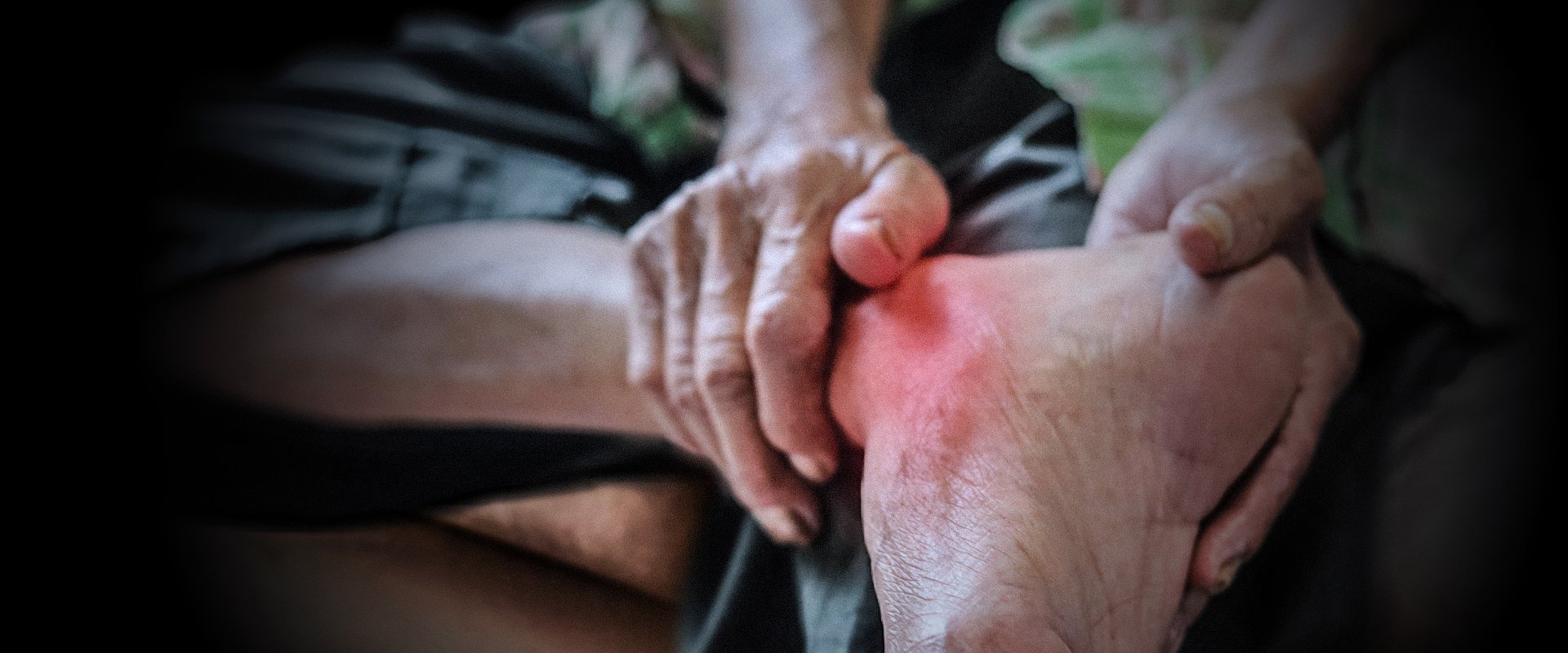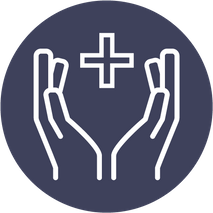
Physical Therapy for Strained Ankle
AT EVOLVE
Physical Therapy for Strained Ankle
HOW CAN PHYSICAL THERAPY ADDRESS ANKLE STRAINS?
An ankle strain is an injury to one of the muscles or tendons in the ankle. An ankle sprain describes an injury to one or more of the ligaments in the ankle. While these names sound similar, they are used to describe injuries to different structures. Ankle strains often occur during exercise or training but can occur unexpectedly outside of those activities as well. Physical therapists are healthcare professionals trained in the assessment and treatment of musculoskeletal injuries like ankle strains. Physical therapy can reduce pain and swelling, improve strength, flexibility and stability around the joint, and help you return to activities like walking, running, and sports.
WHAT DOES PHYSICAL THERAPY FOR AN ANKLE STRAIN LOOK LIKE?
Physical therapy for an ankle strain aims to reduce pain, instability and stiffness, restore normal strength and range of motion and facilitate return to full activities. My team of therapists and I will start by getting to know your concerns and goals and performing a thorough physical exam to determine what areas we should target with our physical therapy interventions. Your therapist will employ manual therapy interventions to target joint and tissue mobility while also prescribing movements and exercises for strength, motor control and mobility to be performed in the home and the clinic. We will guide you through each step of the rehabilitation process from the onset of injury to your return to full activity.
HOW LONG WILL I NEED PHYSICAL THERAPY?
The duration of your physical therapy plan of care for an ankle strain will vary depending on the severity of the strain and your symptoms, as well as the types of activities you aim to resume. While full resolution of symptoms can take some time, you may see some results quickly. You should experience improvements in many symptoms such as pain, stiffness, and inflammation within a couple of weeks but returns in strength, flexibility and overall mobility may take longer. Achieving long-lasting results may take some time, but dedication to your program will not only help you achieve these results but will help to decrease the likelihood of symptoms recurring in the future.
ANATOMY OF AN ANKLE STRAIN
When a muscle is overstretched, asked to contract hard against a sudden load, or overused, injury can occur. Small tears in the muscle fibers or the fibers of the tendon that connect the muscle belly to nearby bone are called a muscle strain. An ankle strain involves one of the many muscles and tendons that surround the ankle. These include:
- Fibularis longus and brevis muscles on the outer lower leg and ankle
- Tibialis anterior on the front of the lower leg and ankle
- Gastrocnemius and soleus muscles of the calf
- Flexor hallucis longus muscle
- Tibialis posterior muscle
- Flexor digitorum longus muscle
- Extensor digitorum longus muscle
- Plantaris muscle
HOW DO I KNOW IF IT’S A STRAINED MUSCLE?
Ankle muscle strains and ligament sprains can sometimes feel similar. Nonetheless, when a muscle is strained, you will experience pain in that specific ankle muscle when it is contracted strongly or stretched. Because many of the ankle muscles have long tendons and muscle bellies, an ankle muscle strain can be felt higher up in the lower leg. If the strain is moderate in severity, you may also notice some localized stiffness, tenderness, and swelling. You may also observe that the muscle feels weaker than usual. If the strain is severe, the muscle belly can tear completely or separate from the tendon causing range of motion in the joints at either end of the muscle to be either significantly reduced because of guarding or excessive because the torn muscle is no longer limiting it.
It is important to note that in most cases a muscle that has been severely torn will need surgery to repair the injury so the muscle can function normally again. For less severe injuries, physical therapy is just what the doctor ordered. Not only will your therapist help you identify an injury to the muscle versus the ligaments, for example, but they can guide you through a smart and efficient recovery process.
End Injury Progression
Physical therapy for strained ankle has proven to prevent injury, slow and even stop pain issues, improve performance, and reverse injury progression in many cases.
Relieve Pain
The movements used in this technique can target your entire body helping you to manage discomfort and pain during the course of your physical therapy treatments.
Improve Range of Motion
Posture awareness is an important area to focus on due to the fact that certain positions may cause you further discomfort and pain.
Restore Mobility
You can regain mobility and flexibility by taking part in the stretches and exercises as prescribed by your physical therapist.
PHYSICAL THERAPISTS CAN HELP YOU RECOVER
PHYSICAL THERAPY FOR A STRAINED ANKLE
While mild ankle strains often recover on their own within a couple of weeks, you may choose to see a physical therapist to address a more severe strain or if the symptoms of a mild strain are interfering with your activities. The goals and interventions for rehabilitation of an ankle strain can be broken down into three stages:
Early/acute phase (first 5-7 days):
- Protect the injured muscle to allow healing to begin
- Use bracing, taping, immobilization and assistive devices as needed to normalize your walk and minimize painful motions
- Consider ice, ultrasound or other modalities to manage inflammation and promote healing
- Passive range of motion that is pain-free may be used to prevent stiffness, maintain range of motion and reduce pain
- Exercising nearby but uninjured areas of the body is helpful
- Introduce active range of motion
- Wean off assistive devices, bracing, taping, etc
- Begin submaximal exercise to lightly load the muscle and promote good fiber alignment
- Begin very light stretching as needed
- Apply gentle soft tissue mobilization to promote healing, reduce pain and mobilize edema
Late/chronic phase (21 days to many months)
- Begin loading the muscle more intensively while monitoring for signs of acute regression including lasting soreness or inflammation
- Increase the load on resistance training
- Increase stretching and mobility
- Incorporate more dynamic weight-bearing exercises
- Perform work and sport-specific drills
DON’T GO IT ALONE
As you can see, recovering well from an ankle strain requires knowledge of the healing process. Whether you are experiencing a muscle strain for the first time or are stuck in a cycle of healing and re-injury, physical therapy is a fantastic resource to help you recover. There is no need to go it alone. The physical therapists at Evolve are here to educate you on the healing process, get you back to your favorite activities and teach you how to prevent re-injury in the future. Call to Schedule a Consultation! 1-718-258-3300Mill Basin (located in Harbor Fitness)
6161 Strickland Ave
Brooklyn, NY 11234
Monday: 7am-8pm
Tuesday: 7am-8pm
Wednesday: 8am-5pm
Thursday: 7am-8pm
Friday: 8am-1pm
Park Slope (located in Harbor Fitness)
550 5th Ave.
Brooklyn, NY 11215
Monday: 9am-8pm
Tuesday: 8am-6pm
Wednesday: 9am-8pm
Thursday: 8am-6pm
Friday: 8am-3pm
Gravesend
372 Avenue U
Brooklyn, NY 11223
Monday-Thursday: 8am-8pm
Friday: 8am-3pm
Kings Highway
945 Kings Highway
Brooklyn, NY 11223
Monday-Wed.: 12pm-8pm
Ready to take the next step to a healthier you?
Contact Us Today!
PHYSICAL THERAPY FOR STRAINED ANKLE!
Need physical therapy for a strained ankle?
Let our caring and compassionate physical therapists help you with relieving pain while getting you back on your feet comfortably.
Call now to schedule your first PT consultation free of charge.
Call: 1-718-258-3300







